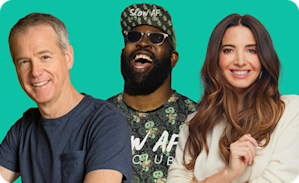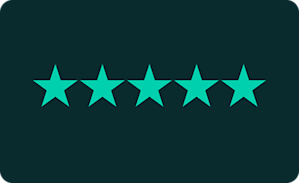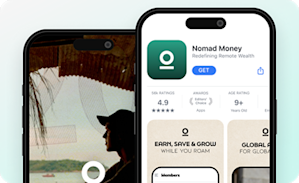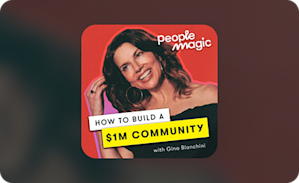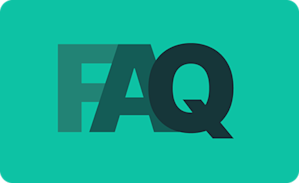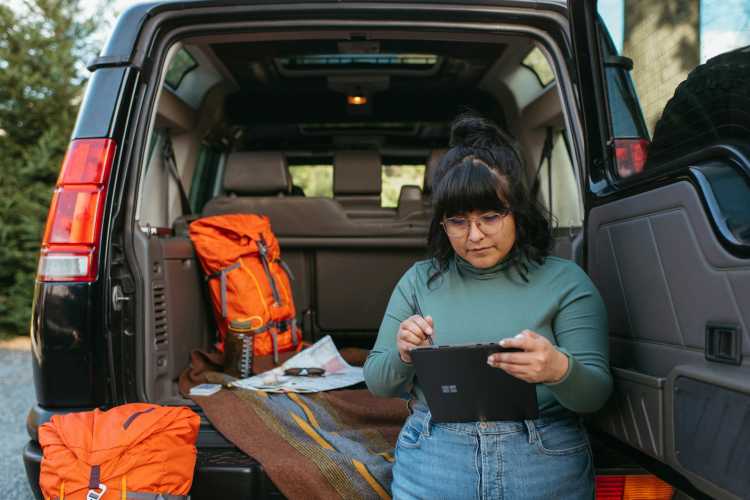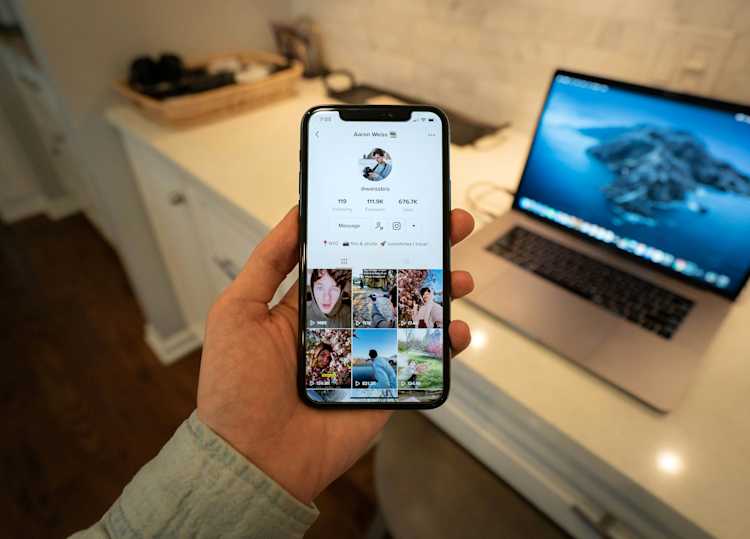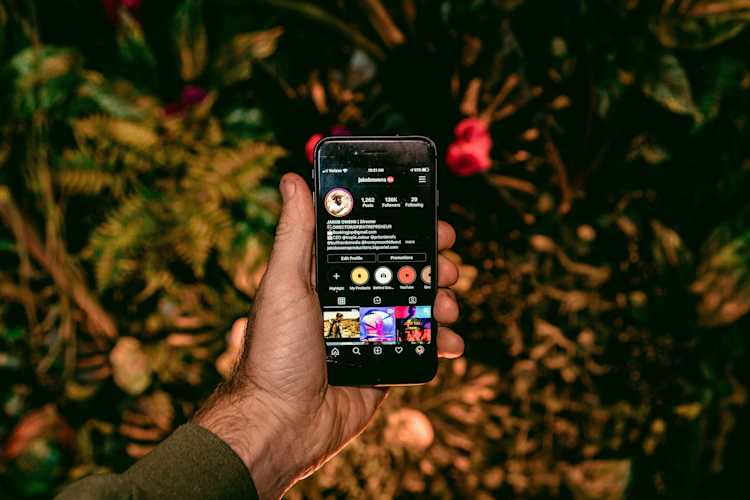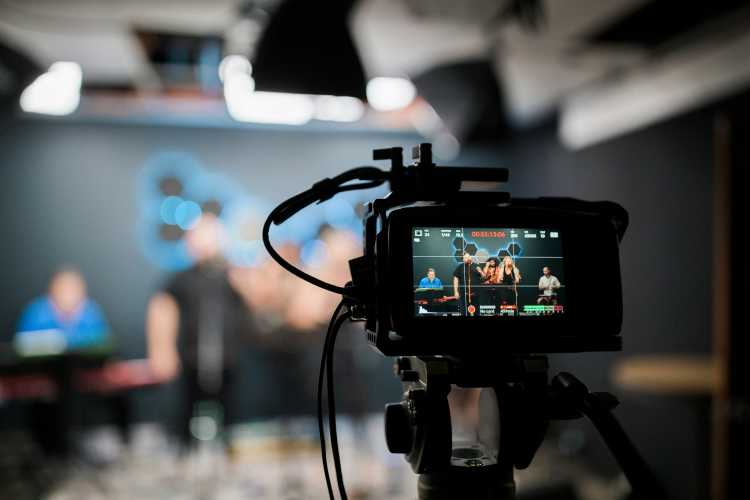Creators & Entrepreneurs
These 12 Instagram Monetization Strategies Will Win 2025
These on- and off-platform options are the most likely to earn you money from Instagram.
Author
Mighty Team
Last Updated
July 31, 2025
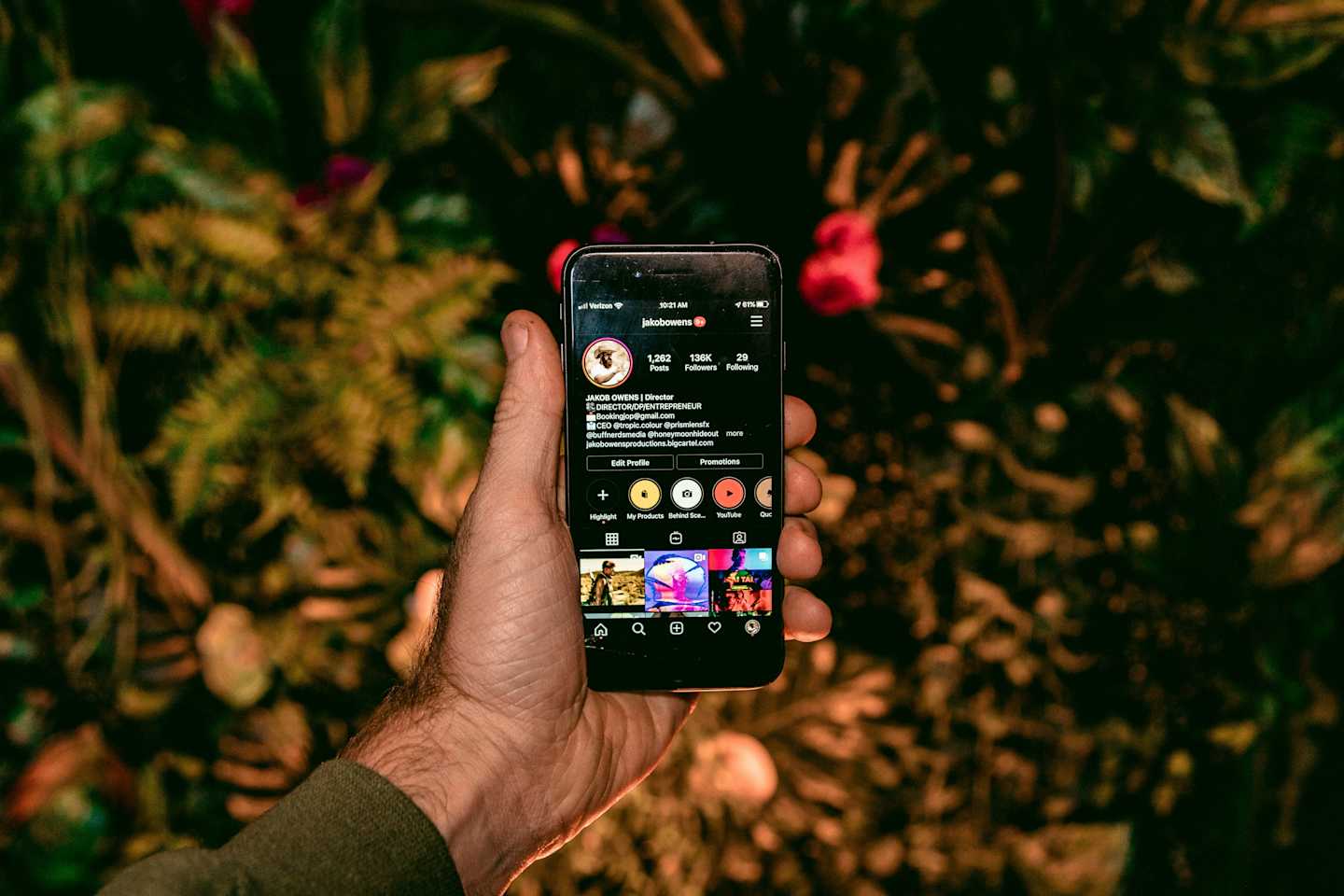
With 2 billion users each day, Instagram is the third largest social network. 80% of brands believe it’s important to their marketing campaigns as the ad revenue was around $71 billion in 2024.
If you’re building a following there, you may be considering Instagram monetization. In this article, we’ll teach you how to monetize Instagram. While Meta has built a few monetization options onto the platform, there are lots of them that happen off-platform too. We’ll give you a mix of options.
Try the platform with the most $1 million communities.
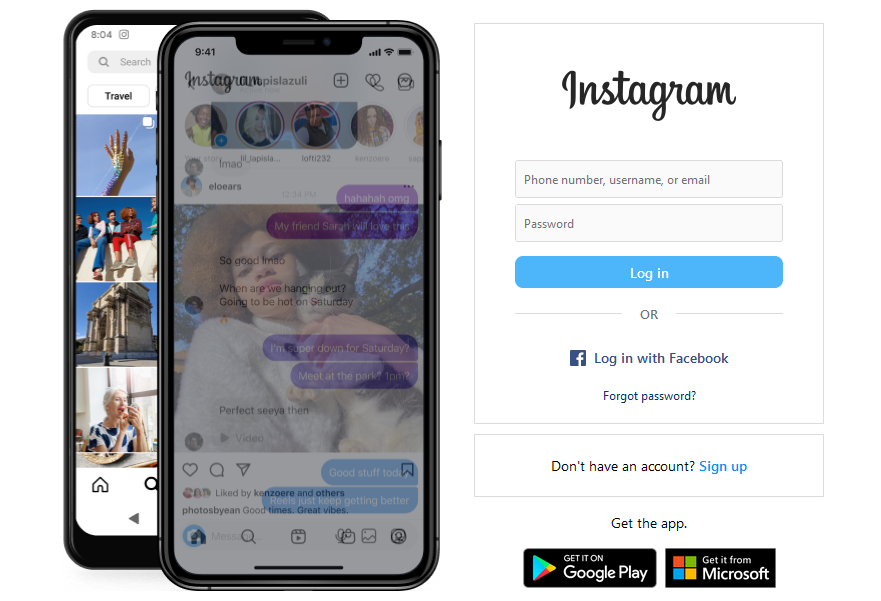
12 Instagram monetization strategies
How it Works | Platforms to Use | Earning Examples | |
|---|---|---|---|
Offer exclusive content, private livestreams, and stories to paying subscribers. | Instagram Subscriptions | **$100/mo** (200 subscribers × $5) | |
Sell products through integrated shopping experience with product catalogs. | Instagram Shopping, Shopify | Varies by product | |
Earn from ads shown in your content and profile. | Instagram Ads | **$0.50-$2.50** per 1,000 views | |
Create sponsored content in collaboration with brands. | IZEA, CreatorIQ, Aspire | **$500-$5,000** per post (10K-100K followers) | |
Create a paid membership community with exclusive content and benefits. | Mighty Networks | **$9,600/mo** (200 members × $48/mo) | |
Create and sell courses teaching valuable skills. | Mighty Networks, Teachable, Thinkific | **$54,000** (200 students × $270) | |
Sell digital items like templates, presets, or guides. | Gumroad, Etsy, Amazon | **$7,000/mo** (200 products × $35) | |
Host virtual or in-person events, workshops, and conferences. | Mighty Networks, Eventbrite | **$8,800** (200 attendees × $44) virtual | |
Sell branded merchandise or other physical items. | Shopify, Printify, Etsy | **$7,000/mo** (200 products × $35) | |
Earn commissions promoting other companies' products. | Impact, ShareASale | **$1,980/mo** (100 sales × $19.80) | |
Offer 1:1 or group coaching sessions. | Mighty Networks, Calendly | **$7,100/mo** (10 clients × $710) | |
Offer professional services like content creation or social media management. | Instagram Business | Varies by service |
What is Instagram monetization?
Instagram monetization is the practice of earning money from your Instagram following. It’s important to note that Instagram does not have a formal “monetization” point finish line like YouTube does–we don’t usually talk about “getting monetized” on Instagram. But there are still several on-platform options and many off-platform options for earning money from Instagram.
Monetization requirements on Instagram
Each of Instagram’s built-in monetization programs have their own requirements. They have slight difference in subscribers needed (e.g. 10,000 for subscriptions), but all will require you to be at least 18 years old, have a business account, be in good standing and follow all policies, and live in an eligible country.

How to monetize Instagram
1. Instagram Subscriptions
Estimated Income: $5 x 200 = $100/mo (based on 10,000 subs and a 2% conversion rate)
Requirements: 10,000 followers; Live in an eligible country; Be at least 18 years old; Have a business account; Be in good standing and follow monetization policies.
This is the best native tool for the average creator to monetize Instagram, if you meet the requirements.

How to monetize Instagram with subscriptions
Instagram’s subscription tool is arguably a pretty great option for creators. Compared with a platform like TikTok or Facebook, it offers a lot more: a monthly subscription with almost 0 fees. Almost all the revenue goes straight to a creator–the only exception are purchases made on the app, in which Apple and Google charge 30% for fees (not Instagram).
You can also offer these benefits to subscribers:
Private livestreams with running comments, focused Q&As, and behind the scenes content.
Stories that appear top-of-feed for subscribers, offering exclusive updates.
Exclusive Reels and Posts hosted on a subscriber home page–new subscribers can see all past content.
Create offers and promotions for subscribers, as well as cancellation upsells.
The platform lets you manage the subscribers too, including blocking or reporting if necessary.
Downsides of the Subscription program
Content treadmill: The burden is on the creator to keep churning out new content to keep members happy. Building a subscription on a membership or community platform instead changes this dynamic, allowing members to create their own content (aka UGC) and engagement via conversations between members. We’ll talk about this below.
Platform limits: Instagram doesn’t play well with external links, websites, or other tools. If your subscription crosses more tech than just Instagram, it’s a headache.
Subscriber management: Unlike your own platform, it’s difficult to really manage members, collect emails, export subscribers, etc. Instagram owns every part of your business, which is scary.
Complete dependency: If you want to go to all the work to build a business on Instagram, understand the risks. One hack or ban could END your business.
2. Instagram Shopping

Estimated Income: Unlimited
Requirements: Business account; Commerce Manager account; Live in eligible country; Be at least 18 years old; Be in good standing and follow monetization policies.
Instagram’s Shopping tool brings social selling to your business Instagram profile. For a creator with an existing product to sell, or even if you’re open to creating products, it could be a good way to monetize Instagram.
How to monetize Instagram with shopping
Instagram’s shopping actually works really well, especially when compared to TikTok or Facebook. It’s a bit more intuitive, and in our opinion offers a better UX than its competitors. This includes an integrated shopping experience–and Instagram reports that nearly half of its users shop weekly on the platform.

Adding shopping on your Instagram means:
Dedicated shop pages: It’s easy to add a product catalogue with descriptions and details of your products. It’s also easy to manage where your products appear, and build collections or highlight featured items.
Product Detail Pages (PDP): that let you manage products and see where your products have been tagged around Instagram.
Connect to checkout: This can mean instant checkout and in-app purchasing, and checkout comes with inventory tracking and order management.
Downsides of the Shopping program
It’s both complicated and limited: Somehow Instagram Shopping can require multiple tools like Commerce Manager, Ad Manager, Meta Business Suite, etc. All while giving you very little interoperability with non-Meta software.
Your business is stuck: Like with subscriptions, it’s hard to get people off Instagram. If you build on Instagram, you’re one hack or lock-out away from losing everything.
You don’t really own your customers: Meta owns them, and it can be hard to get the right data, connect to a CMS, CRM, etc.
You need to build 2 ecosystems: Chances are, you’ll need to do everything twice. If you’re building a Shopify store and website to sell stuff and duplicating it on Instagram, you’re doubling the effort–when you could focus on just building somewhere else and learning to drive customers there.
3. Instagram Advertising
Estimated Income: $.50-$2.50/mille – (Based on aggregate data from real users’ reported earnings on reddit and Quora.)
Requirements: Professional account; Be at least 18 years old; Live in US, Japan, South Korea, or Canada; Follow Partner Monetization Policies and all relevant standards; Have an invite.
Note: Currently Invite Only - If you are eligible, Instagram will send you an invite to sign up.
How to monetize Instagram with advertising
Instagram’s ad program is just in testing, but it seems they are trying to build a program like YouTube to reward creators. Creators who are eligible can join the program and earn from ads. The payout rates are decent by industry standards. And if you’re eligible and invited to join, you’ve got nothing to lose. (Meta is going to make money from your views whether you do or not).

Here are some of the ways ads can show up in your content:
Profile ads that are interspliced with your existing content
In-feed ads on your photos, videos, and carousels
Ads on Stories with integrated C2As
Downsides of the Ads program
Invite-Only: Most creators can’t use it. You need an invite and it’s only available to a select few by country and followers.
You don’t really control the ads: Instagram controls where to put the ads and how many (although this is true even if you’re not monetized).
Uncertain future: Meta is pretty clear that this program is in testing and can disappear in the future.
4. Sponsored Posts
Estimated Income*:
Price Per Post | ||
|---|---|---|
Nano (under 10K) | $100-$500 per post | |
Micro (10K-100K) | $500-$5,000 per post | |
Mid-tier (100K-500K) | $5,000-$10,000 per post | |
Macro (500K-1M) | $10,000-$20,000 per post | |
Mega (1M+) | $20,000+ per post |
All data from Shopify.
Requirements: There’s no official requirements other than following content rules and understanding FTC guidelines–which requires disclosing sponsored posts. However, to succeed you’ll need an engaged following (of real people), a portfolio of content, and perhaps a professional media kit. Turning your account onto Business or Creator mode is also recommended (it only takes a few seconds).
How to monetize Instagram with sponsored posts
Sponsored posts and brand collabs are probably one of the most common Instagram monetization techniques. In fact, Instagram’s influencer market is an estimated $17 billion business, with the average brand on Insta sponsoring at least 5 posts a week.

You can create sponsored content with:
Sponsored posts, carousels, or Reels
Stories with the “Swipe Up” feature (for verified accounts with at least 10,000 followers)
Live Collaborations
To find brands looking for influencers, try one of these three options:
Look for an influencer program. Most big brands will have them with instructions about how to join (Google: BRAND + influencer program).
Check influencer marketplaces like IZEA, CreatorIQ, and Aspire. These connect creators to brands–you can post your deets there.
Reach out to brands directly. Smaller or local brands may not have official programs, but are often willing to work with influencers on a 1:1 basis.

A few more tips
Know your numbers. Having a professional presentation with clear numbers of followers (e.g. a “press kit”) can make a good impression on a potential brand. Remember, they want a value add from your collab or it will end pretty quick!
Know what you want. A lot of brands give away products instead of cash, especially to small influencers. This is okay, if it’s what you want. But if you want to earn from being an influencer, it might make more sense to focus on bringing more value and followers so that you can command more dollars.
A lot is negotiable. Most influencer posts are negotiable. You don’t always need to take the first offer.
Find brands that fit your niche. It really doesn’t work to just try to throw any brand in front of your followers.
Downsides of sponsored posts
Can hurt credibility: In most cases, your followers aren’t here for sponsored posts. You need to balance this with not hurting your credibility and authenticity.
Irregular income: Ask any small creator. As you’re getting established, brand deals can be few and far between. They can get easier as you grow.
Time-intensive: Listing on platforms, negotiating brand deals, going back and forth with brands, all while trying to grow your following. It’s quite the grind–for something most people make next to nothing with.
Competition: Between fighting the algorithm and trying to stand out with other creators, you’re in a constant race for attention.
5. Memberships
Estimated Income: 200 members x $48/mo = $9,600/mo (based on our average member data & a 2% conversion rate from 10,000 followers)
Requirements: Instagram following; Dedicated membership platform
How to monetize Instagram audience with memberships
Memberships have one of the highest potential revenues, combining a solid monthly payment with recurring income. Basically, you create a membership space off Instagram and invite your followers to become members there.
Unlike Instagram’s subscriptions, a membership platform gives you total control over community and content. And it makes it much easier to bring followers from multiple platforms into a branded members space–great, for example, if you create on some combo of Instagram, TikTok, and YouTube.

The bonus is that memberships get you out of the content creation rut. You build a network effect–in which members contribute and engage each other–making growth way easier.
Here are some common membership perks you can offer on a dedicated community platform.
Private community Spaces with different content (video, audio, texts, courses, livestreams, etc.)
Virtual events and calls
Member networking, messaging, chat & discussions, and discovery
Gamification, new member journeys, challenges, & resource libraries
You also have total control over monetization. You can create different platforms and bundles, each with their own perks. You control the brand. And you actually own your members’ information.
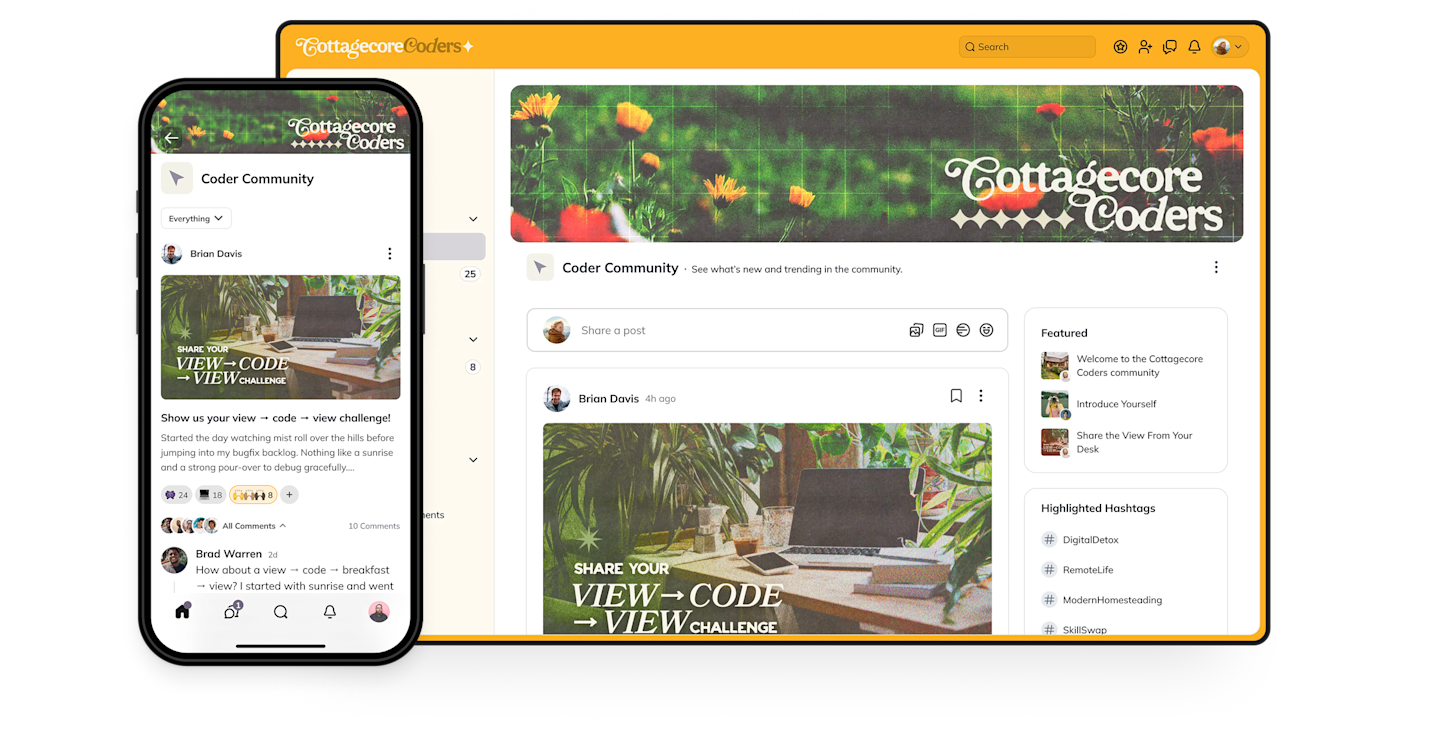
Downsides of memberships
You’ll need to pay a monthly fee for a premium membership platform (but most platforms pay for themselves with 1 or 2 members).
You need to learn to bring people from Instagram to your community platform and convert them.
Try the platform with the most $1 million memberships.
6. Online Courses
Estimated Income: 200 students x $270 = $54,000 (Based on a 2% conversion rate from 10,000 followers)
Requirements: Instagram following; Course platform; Teaching expertise; Content creation skills.
How to monetize Instagram audience with courses
If your Instagram creation lends itself well to teaching, creating an online course should be in your monetization plans. Online learning will be worth $69 billion by 2028, and you should have a part of that.
There are a ton of different ways to create online learning experiences, from pre-recorded courses to live learning, from workshops webinars. You’ll need to decide what method works for you and your teaching style.
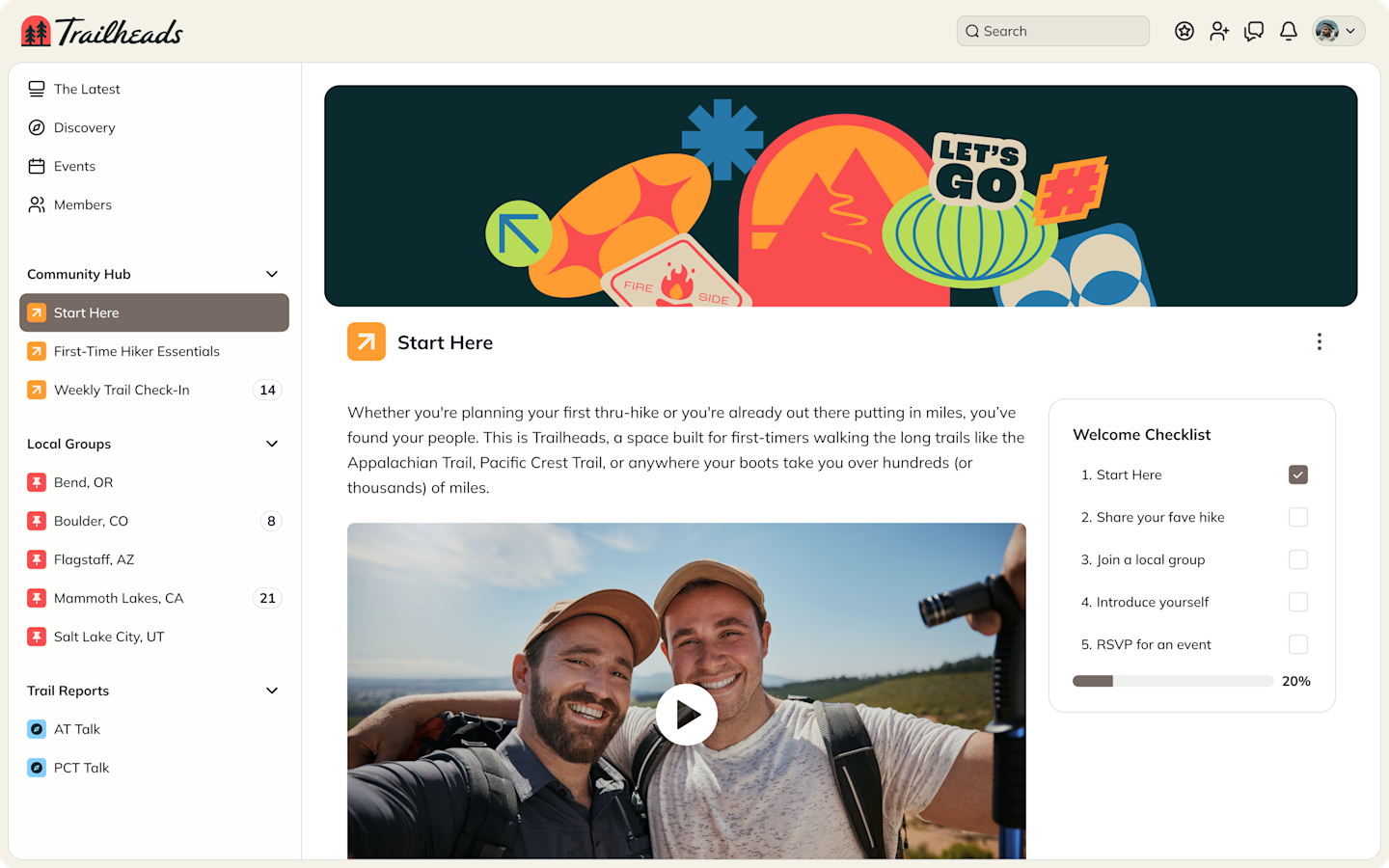
To get started…
Choose a topic that fits your audience. You could do some “market research” by interviewing a few followers about potential learning goals.
Decide on your course format. For example, pre-recorded video courses are a lot of work, but give you the freedom to make mistakes and edit them out. Live cohort courses are less “forgiving,” but let you presell to test your market. It will depend on you, but also your followers. Do they need live, virtual help? Would it be better if they could go at their own pace?
Choose an online course platform and figure out how you’ll get your followers to convert into students.
Teaching takes some work, but creators often find this work very fulfilling–not just financially rewarding.
Downsides of course creation
Each style of building has potential downsides. Pre-building a course that doesn’t sell well feels like a waste of time. Hosting a live cohort course and struggling with presentation is frustrating. (You’ll get better as you go!)
Third-party course platforms all have some form of course fees–either a flat fee or a percentage cut. We recommend a flat fee platform so you aren’t penalized as you grow.
Instagram can be a barrier to sales. It’s not easy to add external links to posts, so promotion can be a challenge.
Example of course creation
Bonnie Christine brings people to her website from Instagram, and sells some awesome courses & eBooks on surface patterns and licensing.

7. Digital Products
Estimated Income: 200 Products/mo x $35 = $7,000/mo
Requirements: Instagram following; E-commerce platform or payment processor; Delivery system; Support (if applicable)
How to monetize Instagram audience with digital products
Other than courses, there are lots of different digital products you could consider selling to monetize your Instagram following.
Here’s a (not exhaustive) list.
Ebooks & PDFs
Lightroom/photo presets
Instagram Story templates
Social media graphics
Content calendars
Canva templates
Photography guides
Content creation guides
Instagram strategy guides
Reels templates
Caption templates
We’ve got an ultimate guide to digital products you can sell here. But most of these will require thinking bigger than Instagram, building out a storefront or hosting somewhere (like Amazon or Etsy).
Digital products offer scale that you can’t get from physical products–no shipping required! This makes the margins awesome, which lets you charge again and again. And with most modern eCommerce platforms, it’s simple to manage customers and orders.

Downsides of digital products
You’ll need to find other tech besides Instagram to deliver and host your product. And yes, that means getting customers off Instagram–and it’s built to discourage this.
It can be a lot of work to create a digital product (depending on the product). And even building it won’t guarantee it will sell. You’ll need to incorporate sales and marketing strategies too.
Examples of digital products
Karlie G. (@the.plantylady) includes links to products and affiliates on her linktree for everything gardeners need, from grow lights to trellises.
Photographer and Videographer Peter McKinnon sells presets and LUTs from his Instagram.

8. Events
Estimated Income:
Virtual Events: 200 attendees x $44 = $8,800 (Based on Eventbrite’s average price & 2% conversion on 10,000 followers)
Live Conferences: 200 attendees x $500 = $100,000 (Global Conference Alliance Numbers x 2% conversion on 10,000 followers)
Requirements: Instagram following; Event platform for virtual events; Venues for live events; Event planning know-how; Team support (esp. For live events)

How to monetize Instagram audience with events
Events are an awesome (and underused) way of making money off of any type of following. If there’s a clear case for bringing people together, virtually or in person, it can be an incredible experience. As a business opportunity, events also let you monetize the energy of a conversation you’re hosting online. AND people genuinely like them.
Here are some examples of events you could run:
Virtual
Webinars and workshops: with live instruction from a teacher (maybe you).
Live Q&As and office hours: These provide unstructured event styles that are still engaging. These also work in the context of a community or membership.
In-Person
Conferences: Bring together a group of people with speakers and agenda for a life-changing experience. Conferences are big costs upfront and a lot of work to organize, but done right they can be huge.
Workshops or training: Bringing people together for live instruction and co-learning.
Retreats & excursions: In-person events don’t have to be serious. They can be getaways or even adventures.

Speaking engagements This is a slightly different take, but instead of hosting your own events, you could find speaking engagements at existing events. Great speakers with a proven social following can run anywhere from $5,000-$25,000, so this is definitely worth exploring. And bonus, you don’t need to do any of the organizing.

Speaking at events can also be monetized with:
Affiliate or brand partnerships (e.g. mentioning from stage).
Upsells into products or services.
High-ticket items (like coaching or a mastermind).
Merch or recording sales.
Downsides of events
Up-front organizing and high overhead, ESPECIALLY for live conferences which can run anywhere from $15,000-$500,000 to organize.
Need for additional staff, support, coordination, etc.
Often need the event to succeed to cover the high overhead and upfront costs.
A LOT of planning, probably more than any other thing on this list.
Example of a live event
ConvertKit hosts an awesome live conference each year: Craft and Commerce. It brings together all sorts of creators, many of them from Instagram.
9. Physical Products
Estimated Income: 200 Products x $35 = $7,000/month (less costs)
Requirements: E-commerce platform; Product suppliers; Inventory management; Shipping solution; Customer service system.
How to monetize Instagram audience with physical products
We covered the Instagram Shopping option above, but this can be either mixed with or replaced with a separate store for physical products. Physical products can be more work, but there’s a tangible value at the other end for a customer. And with the increase in dropshipping and print-on-demand outlets, it’s pretty easy to get a physical product up and selling.

Here are a few ways to do it
Create your own store with a platform like Shopify and sell products you make.
Use Etsy or Amazon and sell print-on-demand products like shirts (you can use a platform like Printify for printing and fulfillment).
If your following is big enough, you could potentially partner with brands to release your own products with a brand.
And these are a few examples of products you could sell:
Branded merchandise like t-shirts, hoodies, stickers, etc.
Beauty products for skin and hair care, cosmetics, etc.
Home decor like art, dishes, small furniture items, etc.
Fitness equipment and supplements like workout bands, yoga mats, pre-workouts, protein shakes, etc.
Downsides of physical products
They can take more work to build and ship, although fulfillment companies and services are making this easier.
You may have to deal with returns and customer service.
If you’re not doing print on demand, you need to balance inventory with sales.
Examples of physical products
Chrislovesjulia is an account dedicated to home renovations, and you can find their products at Home Depot.
The graphic designer Aaron Draplin (@draplin) sells prints and posters from his website through a linkinbio.

10. Affiliate Marketing
Estimated Income: 100 Sales x $19.80 = $1,980/mo
Requirements: Instagram Business Account; Disclosure compliance (FTC guidelines); Content strategy that fits with affiliate sales.
How to monetize Instagram with affiliate marketing
Affiliate marketing means you earn commissions by selling products that you really love. Although most Instagrammers are thinking about sponsored posts, affiliate programs can be a pretty great way to earn some income too.
Unlike brand deals, affiliate programs are usually “self-serve,” meaning you can start regardless of following. All you need to do is join the affiliate programs of brands you love, get your own, sharable link, and start!

Affiliate programs are really scalable, and usually offer either a one-time commission or a recurring commission for monthly SaaS products.
Here’s how to do it.
Check your favorite brands for affiliate programs. You can search BRAND + AFFILIATE PROGRAM and you’ll find it–if they have one. Most require sign-up and approval, but after that you’re good to go!
Join an affiliate marketplace. Platforms like impact.io and ShareASsale host affiliate programs for multiple affiliates at once. If you join the marketplace, it’s really easy to manage multiple affiliates there (with dashboards, custom links, new programs, contract management, etc.)
Create custom affiliate programs. This could be with a brand you love, but more often it’s done in partnership with a fellow creator. For example, if a creator in your niche has a course that you love, you could promote it to your audience for an affiliate commission.
Instagram creators are sharing affiliates for things like tech gadgets and software, beauty products, fashion, home decor, fitness products, travel, and lifestyle products.
Downsides of affiliate marketing
Instagram isn’t really built for sharing links. You need to get people to a link in bio and hope they click through–a lot of friction.
Must disclose relationships for affiliates.
Need to understand how payments work and when links expire. Also, brands can change their programs–requiring new compliance or updated links.
Need to find a balance between content value and affiliate pitching. You can lose your audience if you’re too pushy.
11. Coaching Services
Estimated Income: 10 clients x $7,100 = $7,100/month
Requirements: Instagram following; Expertise & reputation in your niche; Coaching & booking platform.
How to monetize Instagram with coaching
Coaching is a really incredible thing, working with clients to help them get results. Instagram is a great spot for coaches to grow their client base, because it’s a good platform to get your authenticity across.
Although online coaching isn’t endlessly scalable like some of the options on this list, it does provide a high-ticket offering for monetizing your Instagram. And it lets you see your life-changing results first hand.
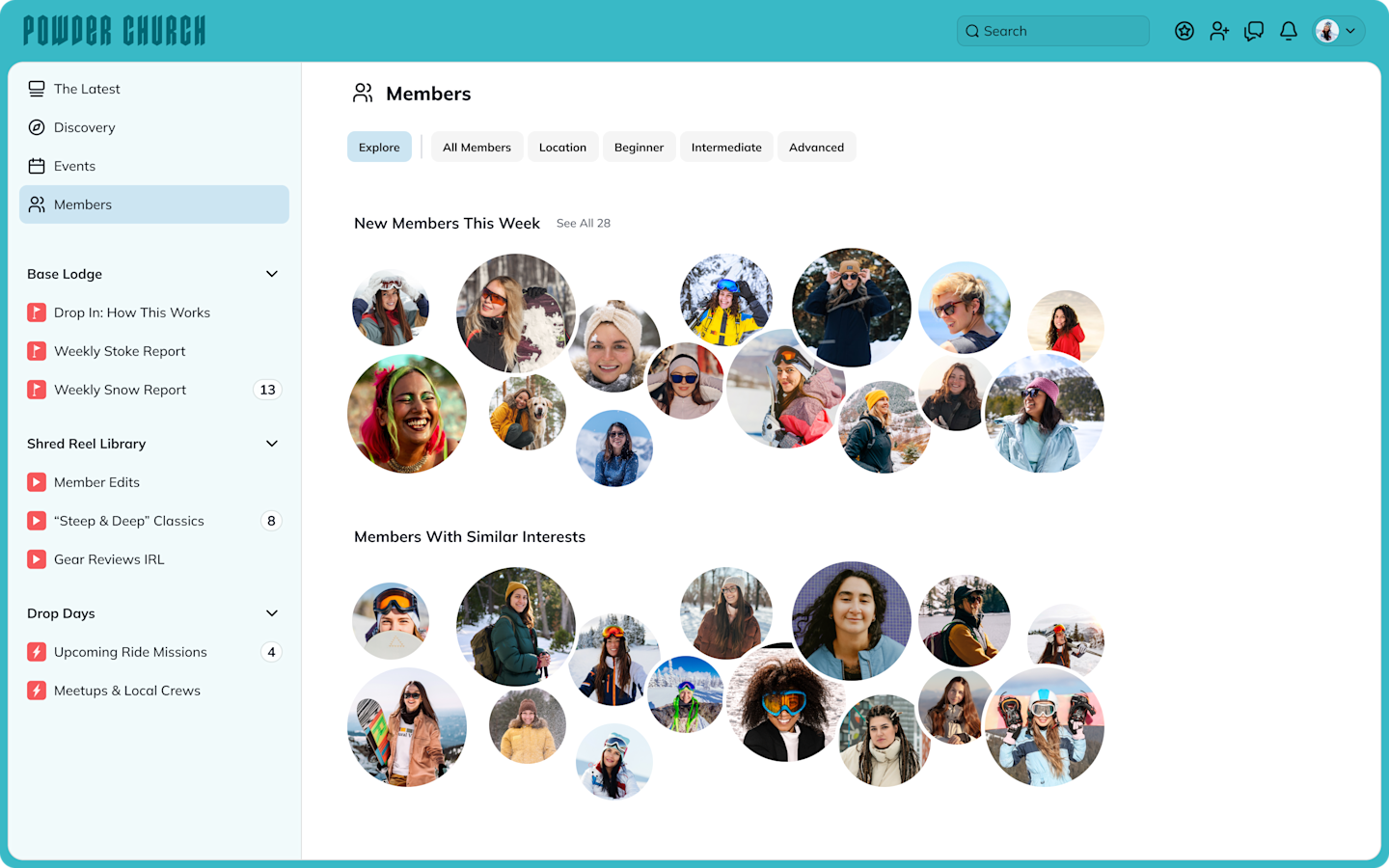
Here are some of the different ways to structure coaching:
1:1 coaching is what most people expect, you work directly with a client to help them get results. The impact is high, but the scale is low.
Group coaching can be a great alternative to 1:1 coaching, since it lets you work with more people at once. You can earn more, while sometimes charging clients less. Some clients will prefer 1:1, but group coaching can be really powerful too, as people go through a transformation together.
Hybrid coaching and courses lets you scale through offering some coaching sessions, but mixing it with pre-recorded courses to let you scale more.
Masterminds are an alternative coaching style, which can bring people together for amazing results. Unlike group coaching, a mastermind isn’t directed from the coach downward. Instead, members work together to coach each other and encourage them through a transformation.
Downsides of Coaching
It can require a higher time commitment to deliver, and you’ll need to balance it with content creation.
Requires a high amount of personal attention, managing expectations and boundaries, and setting schedules.
There’s a limit to how scalable it is.
12. Services
Estimated Income: Difficult to estimate
Requirements: Instagram following; Service contracts; Invoicing & POS.
How to monetize Instagram with services
If your Instagram account either teaches an in-demand skill or demonstrates that you know how to do it, can you use it to monetize? For example, if you teach digital marketing or content creation or ads, those are all things businesses pay for. Or, if you’re naturally great at building a following and managing social profiles, that’s a service skill too.
You’ll need to demonstrate to potential customers you can help them get what they want, but Instagram is great for building the credibility you need.
Here are some possible service-based skills you could offer:
Content creation, social media, or website management
Analytics and data reporting
Ad buying and funnel optimization
Editing
AI prompt engineering
Graphic design and brand management
Accounting or bookkeeping
Community management
Video editing and production
Competitor analysis or growth hacking
You can sell services on a one-time basis or as a retainer model. And Instagram can help you build your portfolio, make connections, and find clients.
Downsides of monetizing with services
It’s not scalable. You can only offer services for the hours you can work.
You need to manage expectations and it’s higher stress.
Need to balance between getting new clients and delivering to existing ones.
Conclusion
When you look at this list, there are a ton of ways for creators to monetize Instagram. So what are you waiting for? Get started! Whether it’s side hustle money or you replace your day job, there’s a freedom and joy that comes from earning from your hard work online.
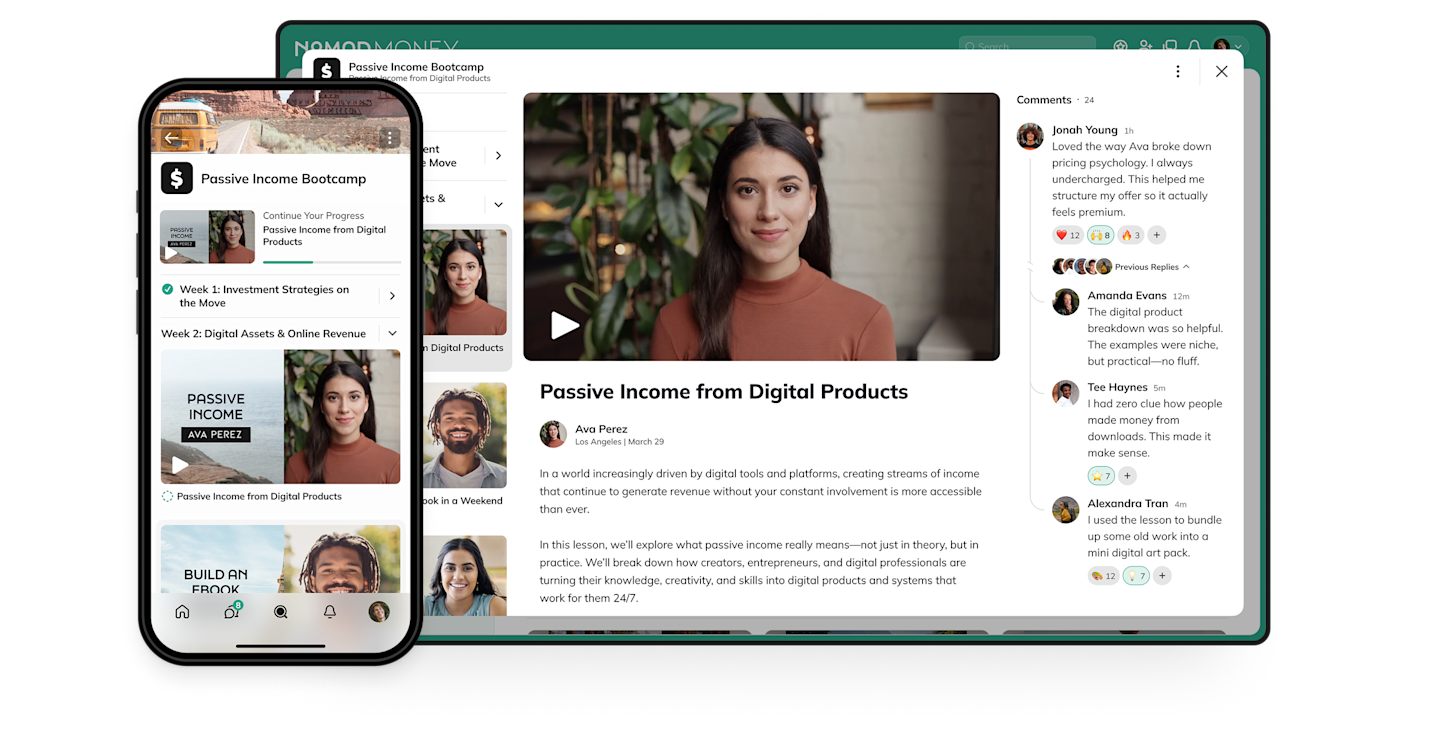
And if you want to launch a membership community, course, or events, come build with us! Mighty is G2’s top-ranked community management platform. We’re home to creators and names like Tony Robbins, Gary Vaynerchuck, Marie Forleo, Mel Robbins, and Matthew Hussey.
You can try the platform free for 14 days!

Ready to start building your community?
Start a free 14-day trial to explore Mighty—no credit card required.
More like this
Join Mighty Community
Learn the principles of Community Design™ (and see them in action) alongside thousands of creators and entrepreneurs. It's free to join!
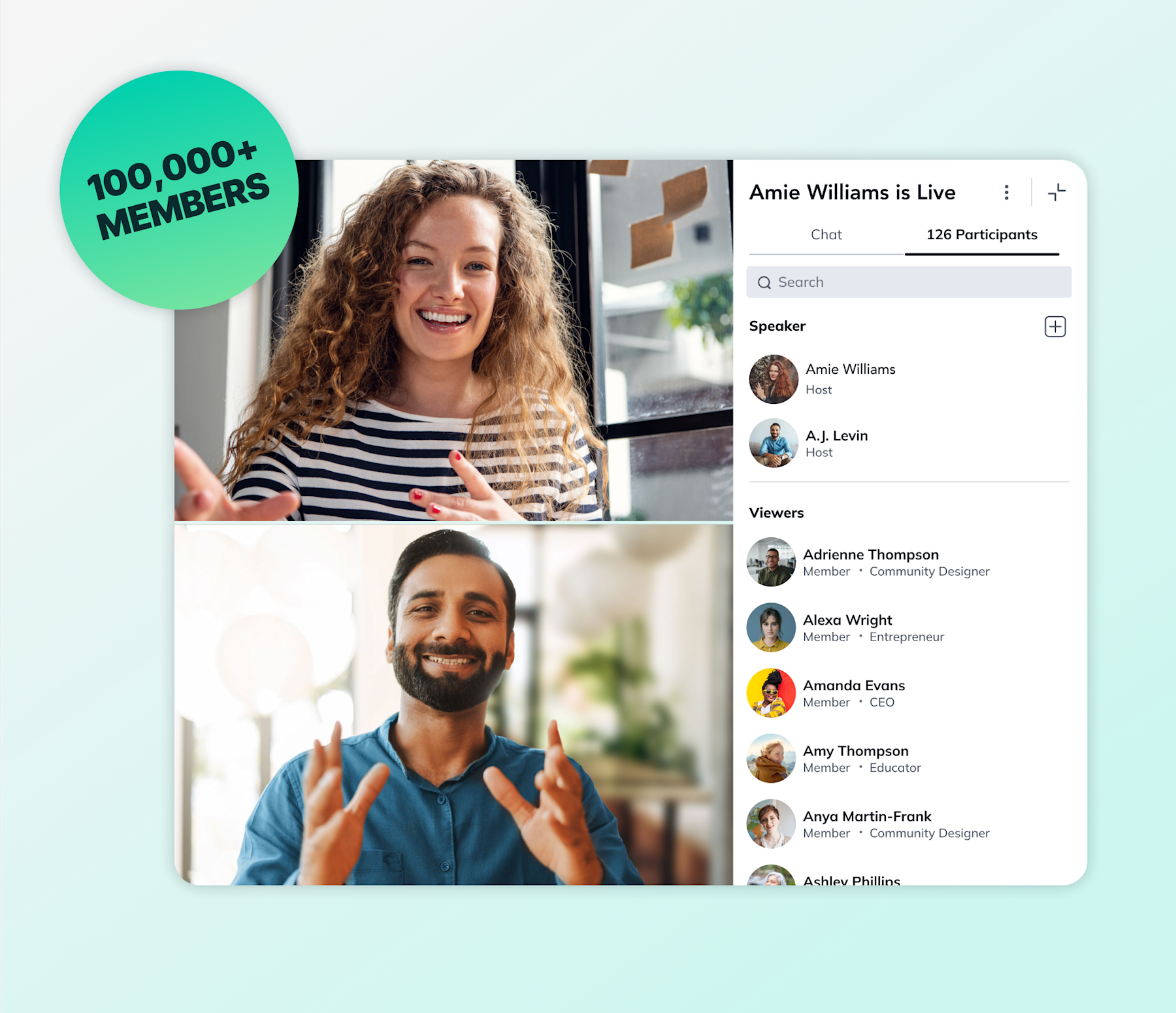
Communities & Memberships
Community Platforms
Managing a Community
Building a Community
Growing a Community
Monetizing a Community
Content Creation
Online Courses
Creating a Course
Teaching a Course
Course Platforms
Selling a Course
Creators & Entrepreneurs
Monetization
Content Creation
Starting a Business
Website Builders
Creating & Managing a Website
Events
Event Platforms
Hosting & Marketing Events
Branded Apps
Creating a Mobile App
Coaching Apps
Community Apps
Coaching
Mastermind Groups
Starting a Coaching Business
Coaching Platforms
Filter by Category
Communities & Memberships
Online Courses
Creators & Entrepreneurs
Events
Branded Apps
Coaching
Build a $1 Million Community
This free masterclass went viral—sign up to learn why.
